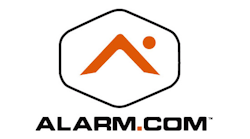SD&I Cover Story - 2016: The Year of the 2G Sunset
If you have been procrastinating when it comes to transitioning alarm customers away from AT&T 2G communications technology, 2016 marks the year that it officially moves to the proverbial “front burner.”
2G signals will no longer be active on cellular towers as of Dec. 31, 2016. Although the 2G receivers will be turned off by that date, it has been reported that some areas have already experienced total loss or intermittent failure of 2G service, thanks to ongoing reallocations of available spectrum from 2G to superior technologies, such as 4G. In short, delay tactics are no longer feasible for alarm dealers — if you haven’t already, it is time to get into full swing on converting your customers, which really isn’t such a bad thing. In fact, it should create a multitude of new opportunities for your business.
“Most dealers have addressed the phasing out of 2G over the course of 2014 and 2015; but for those that have not, the upgrade to 3G and 4G provides a great opportunity to reengage with clients using this legacy technology,” explains Dean Mason, Sr. Communications Product Manager for Honeywell Security & Communications. “As 3G and 4G offer faster connectivity with improved remote services performance, the opportunity to swap out 2G radios provides a great platform for upselling, and can help drive additional opportunities for increased RMR.”
Developing a strategy to facilitate these upgrades for customers is key. “We started upgrading these communicators in late 2012 and worked hard to make this a part of our regular business operation,” explains Craig Leyers, Senior Vice President of Sales and Marketing for Nashville, Tenn.-based ADS Security. “We very much wanted this to be a ‘process, and not an event’. This proactive ‘process’ has helped to reduce the number of upgrades we end up giving away at no cost to the customer. As importantly, it has all of our team pulling in the same direction on an issue important to our customers, to ADS and to the industry as a whole.”
Upgrade Options
From 3G to 4G LTE to Wi-Fi, there are a variety of options available. The different technologies offer progressively higher data speed rates, thus enabling the cellular networks to run more efficiently. Additionally, the higher the speed of the network, the more viable it is to add video surveillance technology either now or in the future.
Some of these technology choices are exclusive to certain manufacturers, while others are offered by a range of vendors.
3G: There are several options available for upgrading to 3G from a variety of manufacturers. One option for delivering primary or back-up alarm communications is HSPA wireless communications over a 3G network.
CDMA is another popular option. Virtually all cellular communication products designed to work with the Verizon network in the alarm industry are based on “pure CDMA” technology. “In the burglary world, where fewer signals are typically sent and smaller data packages are required, GSM (cellular) service providers have often been more aggressive in their pricing strategies,” explains Brandt Phillips, Commercial Fire & Security Director of Sales for Napco Security Technologies. “CDMA (Verizon) pricing has historically favored larger data packages, and as a result, usually translates into more cost-effective service for more data-intensive applications like fire alarm monitoring. In the commercial systems world, I believe CDMA is the preferred option for most dealers. The overwhelming majority of dealers I speak with prefer to use CDMA because they tell me it offers better coverage in their area.”
HSPA+ — three times faster than “plain” 3G technology and comparable to LTE, is also an option.
For fire alarm systems, dealers can choose a 3G-compliant cellular radio —just be sure it is UL-listed and complies with NFPA-72 and UL 864 ninth edition.
4G: It may have taken a couple years, but faster LTE has finally become a viable option for alarm communications as well. “As dealers upgrade 2G accounts, they should consider both the longevity and reliability of the new connection they install,” says Jay Kenny, Senior VP of Marketing for Alarm.com, which offers exclusive Verizon LTE radio service for its customers. “A tamper resistant cellular connection has long been a key selling point for security dealers. As new competitors have entered the security market, our dedicated cellular connection has given our dealer partners a clear differentiator and advantage.”
With addition of Voice Over LTE, users can communicate directly with central stations during an emergency over the LTE Network. LTE also provides the capacity to deliver advanced smart home services.
Wi-Fi: With the proliferation of Wi-Fi-based communications in homes and businesses, this ultra-fast communications method might make sense, but experts warn that a backup cellular-based communicator should still be used, as Wi-Fi networks tend to go down without warning. Advantages of an Internet-based offering include communication speed, higher supervision level and no need to worry about future cellular sunsets. Also, if your customer changes routers or other related equipment, it might mean a truck roll for the alarm dealer.
A combination of the broadband and cellular technologies was introduced by Telguard in 2015. Called SafetyNet, it offers combined broadband with pay-on-demand cellular service — making Wi-Fi a more practical option. The feature was designed to allow cellular to immediately back up Wi-Fi in those cases when the broadband pathway becomes unavailable; and the first two cellular signals each month are free in the event that cellular service is needed.
Central Station Impact
Another aspect of the 2G sunset that should be considered is its impact on third-party central station providers. For decades, central station communication technology essentially consisted of four main components: phone lines, alarm receiver hardware, monitoring software platforms and telephone systems — so, adopting new transmission technologies usually involves installing a new receiver or upgrading firmware in an existing one.
“Depending on how the signal transmits, the impact from a dealer upgrading its customers from 2G to 3G/4G can range from being totally transparent and seamless to a central station — to requiring firmware upgrades, to installing new receivers,” explains Jim McMullen, President and COO of COPS Monitoring. “The explosion of cellular and IP-based alarm communications has also created a large demand for real-time dealer and subscriber connectivity forcing even the most experienced monitoring providers to re-evaluate the way they look at systems reliability, data security, and user accessibility.”
As 2G signal transmission becomes less reliable as the year goes on, McMullen warns that central stations will see an increase of missed alarms and other signals, communications failures and fail-to-test signals. “All of these not only compromise the customers’ security, they also impact the central station by increasing call volumes,” he says.
“A central station in today’s world must have the resources and expertise necessary to make the initial and constant ongoing investments in alarm receiving technology, broadband connectivity, telephony components, routers, firewalls, network switches, load balancers, and mainframes,” McMullen continues. “In addition, they must also possess the sophistication needed to understand and manage Virtual Private Networks (VPNs), Application Programming Interfaces (API), Software as a Service (SaaS), Autonomous Systems Numbers (ASNs), Domain Name System (DNS) management, and several other highly technical components.”
Sometimes, things are even more complex. With multiple, active 24/7 central station locations, providers must consider items like data propagation and replication, active load balancing and real-time failover capabilities.
“As an alarm dealer, you should expect your central station to not only progress with the technical demands of the marketplace, but also anticipate them,” McMullen says. COPS, for one, recently completed a $2 million infrastructure upgrade, part of which addressed the communications transition.
The Time is Now
Whatever choice you make, putting it off is no longer an option. “Ultimately, if the customer doesn’t upgrade to a new transmission technology, the dealer will lose the customer,” McMullen warns.
A great course of action for any dealer still working to shift customers to alternative transmission methods is to first consult with your trusted vendor partners — chances are very good that they have the products and the strategies to ease the transition. Then build the upgrades into your renewal process or as a part of unrelated truck rolls.
“Don’t underestimate the importance of communicating to your customers the need to upgrade their alarm system’s communicator and what it means to them,” says Dwayne Salsman of Tyco Security Products.
In addition —and perhaps most important for dealers — moving customers to faster communications technology opens the door to further upgrades, especially adding video surveillance and home automation technologies.
Paul Rothman is Editor-in-Chief of Security Dealer & Integrator (SD&I) magazine (www.secdealer.com).







